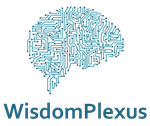Using Digital Asset Management to transcend productivity barriers.
We inhabit a digital world of organized chaos, where the demand for agile marketing has resulted in an overwhelming surplus of digital assets clogging up our devices and obscuring our productivity.
What is Digital Asset Management (DAM)?
Digital Asset Management is an automation system for organizing, categorizing, storing, and retrieving rich media digital files and permissions. DAM empowers organizations to connect, control, and centralize both local and global access to digital content files and company data, and ensures digital assets are accessible to everyone who needs them when they need them.
Challenges in the Digital World Creating Productivity Barriers:
Different markets and their branding teams have to spend an enormous amount of money, time, and effort finding, organizing, and sorting their digital assets. Data stored on various platforms often leads to incorrect or out-of-date asset usage. To eliminate these pain points, the company needs a solution that would centrally store all their current and on-brand assets.
Digital Asset Management solutions:
Knowing the needs and finding the right solution, a Digital Asset management (DAM) system should offer a friendly interface that is easy to use, but it should include these three key steps before making the final decision:
-
- Identify your goals and expectations
- Identify must-have features
- Identify the right provider
Features of DAM that provide compelling advantages over traditional asset management
Secure storage: Offering common security measures built around your data's needs, DAM can ensure that your organization abides by strict digital rights management (DRM) guidelines. Digital Asset Management maps the usage rights regarding all of your digital assets.
Identity control: Digital Asset management facilitates the internal management of your brand’s corporate identity. Creating a clear path to corporate identity guidelines and thousands of on-brand digital assets, DAM provides secure global access to approved useable content.
Easy integration: It should effortlessly integrate with your existing infrastructure. Working with CMS, CRM and another department, DAM helps you to manage projects, delegate resources and roles better, optimize and target assets, and identify top-performing content.
Digital Asset Management (DAM) is a must-have in sales and marketing: A better way to manage your digital content files.
Related articles:-
Top Digital Asset Management Tools and their Benefits to Businesses




